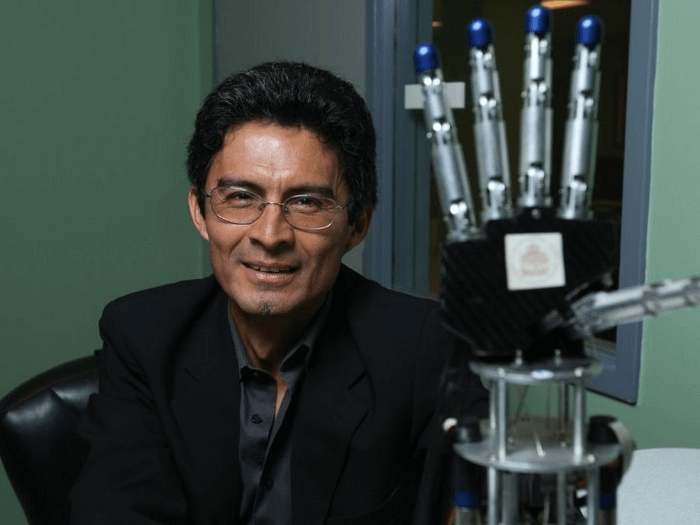A pioneering new brain-controlled robotic invention will be able to help stroke patients rehabilitate at home. University of Houston engineering professor Jose Luis Contreras-Vidal and his team developed the first portable brain-computer interface (BCI) exoskeleton to restore upper limb function.
The robotic arm is controlled by the brain and requires no surgery. It is accessible to robotically guide stroke rehabilitation both in clinic and at home.
“The broader impact and commercial potential of this project and commercial potential of this project is to advance national health by accelerating development, efficacy and use of brain-controlled robotic rehabilitation after stroke by capitalizing on the benefits of non-invasive brain interfaces that extract information about the patient’s motor intent and the real-time assessment of impairment and recovery of motor function,” says Contreras-Vidal, a professor of electrical and computer engineering at the University of Houston, in a statement. “Brain-machine interfaces based on scalp electroencephalography (EEG) have the potential to promote cortical plasticity following stroke, which has been shown to improve motor recovery outcomes.”
The robotic arm is able to translate the user’s brain activity into motor commands to drive powered, assist-as-needed, upper-limb robotics. “Performance feedback is stored for monitoring and diagnostics through a user interface that also serves to provide engaging real-time feedback of task and associated completion performance,” the media release reads.
“The device recruits the brain and depends on brain activity to initiate the robotic movement,” explains Contreras-Vidal. “When you perform the robotic movement, there is feedback from the body coming back to your brain, so we have top-down information from the brain and bottom-up information from the arm and that leads to neuroplasticity.”
Neuroplasticity is the brain’s ability to modify, change, adapt and recover itself.
The first patient in the world to use this brain-controlled robotic arm is 66-year-old stroke patient Oswald Reedus. He lost the use of his left arm the night he had the stroke in 2014. “If I can pass along anything to help a stroke person’s life, I will do it. For me it’s my purpose in life now,” says Reedus. “I don’t know why God spared me, but I want to leave here helping someone.”
Stroke is the leading cause of neurological disability in the United States as the loss of arm movement is the primary cause of physical disability.
Dr. Gerard Francisco, chief medical officer and director of the Neuro Recovery Research Center at TIRR Memorial Hermann, reports that many patients say recovering the use of their hands is more critical than walking. “If they cannot walk, they can be in a wheelchair, but if they cannot use their hands there are so many things that they will not be able to do,” explains Dr. Francisco on why the robotic arm is of particular interest to patients at TIRR.
The robotic arm project is funded by an $813,999 grant from the National Science Foundation’s newly created Division of Translational Impacts, TIP Directorate for Tech, Innovation, & Partnerships.












